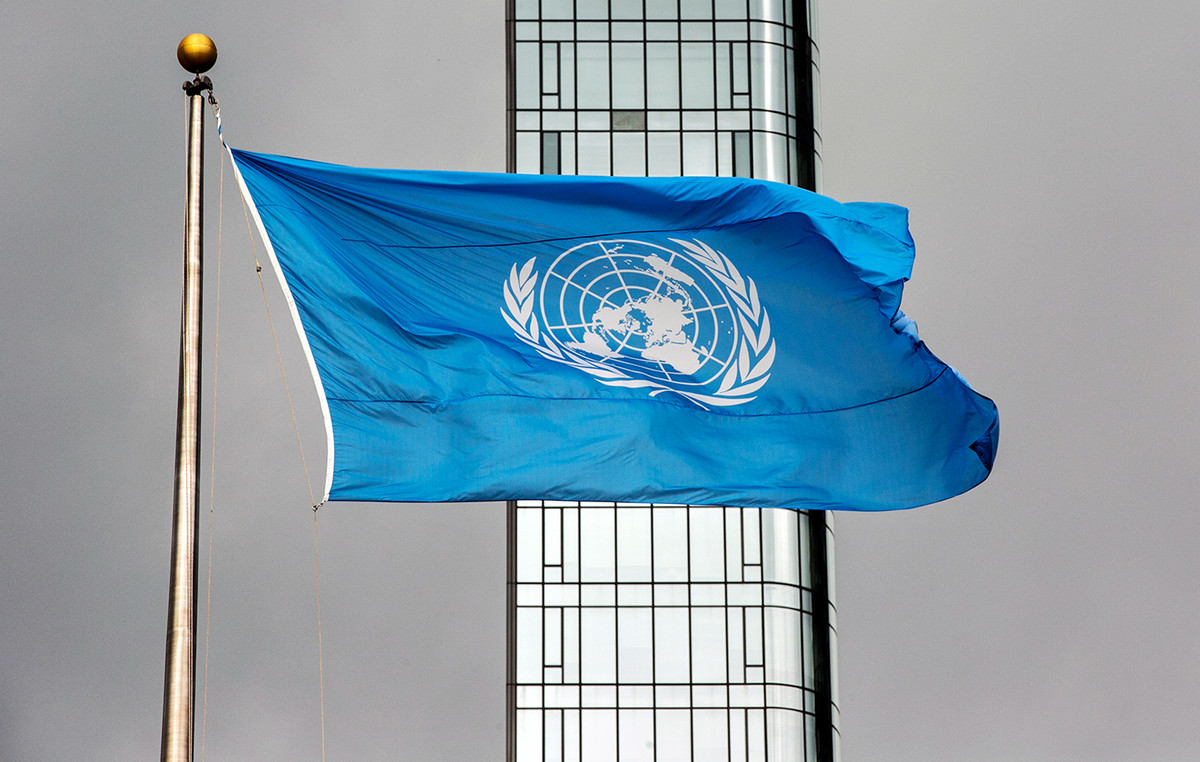Workers dressed in protective suits spraying clouds of disinfectant on city streets, building facades, park benches and even on packages has become an everyday scene in pandemic-era China.
In Shanghai, the epicenter of the country’s biggest coronavirus outbreak, state media reports that thousands of workers have been organized into teams to disinfect areas, with a focus on places known to have hosted Covid-19 patients – a move the government sees as fundamental to contain the spread of the Ômicron variant.
But the practice often goes much further. Any outdoor area is apparently at risk of being targeted by workers with machines that spray disinfectant leaf-blower-style, as China’s strict “zero Covid” policy breeds an obsession with sanitizing everything.
In Shanghai, firefighters were removed from their duties to take over the job of disinfection, a local youth league recruited volunteers for disinfection squads and emergency rescue teams from distant parts of China were enlisted in the unit – often laden with equipment. heavy weights and full body protective clothing.
In some Shanghai neighborhoods, special chemical production stations were installed, while vehicles were equipped with chemical tanks and cannon-like devices to spray disinfectant onto the streets, according to local media. Disinfection robots were deployed at railway stations and set up to patrol some quarantine centers.
But these efforts — and others, like the insistence that workers wear protective clothing and the shrill recorded messages that play all the time reminding people how to prevent disease — can be a waste of time, effort and resources.
Experts say the transmission of the virus through contaminated surfaces is exceptionally low — and that sanitizing outdoor areas, such as parks and city streets, is largely useless and, even worse, could even pose a danger to public health.
“Robots and street spraying are performative acts designed to bolster public confidence in government actions,” said Nicholas Thomas, an associate professor at the City University of Hong Kong, who pointed out how Chinese officials have long cited environmental contamination. as part of its rhetoric that the virus may not have originated in China.
“It is a problem when policy dominates and diverges from the science response to the pandemic – more and more efforts are made to enforce policy through acts that do not necessarily increase the biosecurity of affected populations to the same degree as the effort required to undertake them,” he said.
Virus imported?
Mass disinfection is part of a long-running campaign in China to combat the risk of Covid-19 transmission that much of the world has deemed too minimal to ensure measures after hand washing and maintenance of disinfection of certain surfaces, such as those in busy public places and where food is handled or patients with Covid-19 are treated.
In a scientific summary last year, the US Centers for Disease Control and Prevention said scientific studies suggest that each contact with a surface contaminated with Covid-19 has less than a 1 in 10,000 chance of causing an infection. This research has led many to see an open focus on disinfection as “hygiene theater” as opposed to any meaningful disease prevention measures.
Mass disinfection is not part of disease control measures in Western countries “because public health officials followed the science,” according to Emanuel Goldman, a professor of microbiology at Rutgers-New Jersey Medical School.
“[É] highly unlikely that any cases result from touching contaminated surfaces. The virus quickly dies outside of an infected person […] and is transferred very inefficiently through the fingers,” he said. “Washing your hands with soap or alcohol wipes is all you need to reduce the incidence to zero.”
In China, where strict practices have focused on eliminating any spread of the virus, concerns about contaminated surfaces date back to the early months of the pandemic, especially after Chinese officials said an outbreak at a market in Beijing likely started because a worker was infected. by handling imported and frozen salmon contaminated with viruses.
While the World Health Organization says it is “highly unlikely” that people can contract Covid-19 through food or food packaging, Chinese officials have on several occasions pointed to imports from cold food chains or other contaminated surfaces. , such as on planes or even international mail, as vectors of disease.
This has led to a series of measures, largely unique to China, such as testing the surfaces of imports for traces of the virus and mass disinfecting frozen goods from abroad, while some cities have launched multiple orders to disinfect international mail and parcels – although national health experts said earlier this year there was not enough evidence these non-cold chain related items could carry the virus.
And as Beijing sought to reshape the narrative around the origin of the coronavirus, first detected in China, officials have floated a theory that the virus could have been imported in frozen products in the first place — a hypothesis largely dismissed by international experts.
While there is some evidence that the virus can remain infectious in frozen packages, how countries might want to deal with this risk varies, according to Leo Poon, a professor at the University of Hong Kong’s School of Public Health.
“For countries using the elimination strategy, this is a significant risk. However, for most countries now, this may not be significant,” he said.
But when it comes to touching regular surfaces, this “is not a great mode of transmission.
of Covid-19,” he said, adding that some indoor disinfection might be a good idea.
Potential risk
In places like Shanghai, where resources are already scarce as the city struggles with a weeks-long lockdown, sending in volunteers and workers for disinfection purposes can put the spotlight on the wrong risk.
“There really is no role for mass disinfection of outdoor areas, floors and walls. These sites are unlikely to be contaminated or cause transmission through a mucosal surface (such as eyes, nose or mouth),” said Dale Fisher, a professor at the National University of Singapore’s Yong Loo Lin School of Medicine.
There can also be downsides to this work, according to Goldman of Rutgers-New Jersey Medical School, who says people can be harmed by exposure to severe disinfection.
While the WHO supports disinfection, for example cleaning areas such as doorknobs in busy public places, the WHO guidelines say that “spraying disinfectants, even outdoors, can be harmful to people’s health and cause eye irritation or damage, respiratory tract or on the skin”.
At the start of the pandemic, a group of Chinese scientists warned in a letter to the journal Science that excessive use of chlorine-containing disinfectants could pollute water and even endanger the ecosystems of nearby lakes and rivers.
There are signs of similar concerns from the Shanghai authorities, even as they press for disinfection measures.
Late last month, officials released recommendations for residents on how to disinfect, urging them not to “spray disinfectants directly on people”, use “trucks with disinfectant cannons” and drones, or disinfect outside air.
“These practices are essentially ineffective and can cause health risks and environmental pollution,” said a Shanghai official.
Source: CNN Brasil







